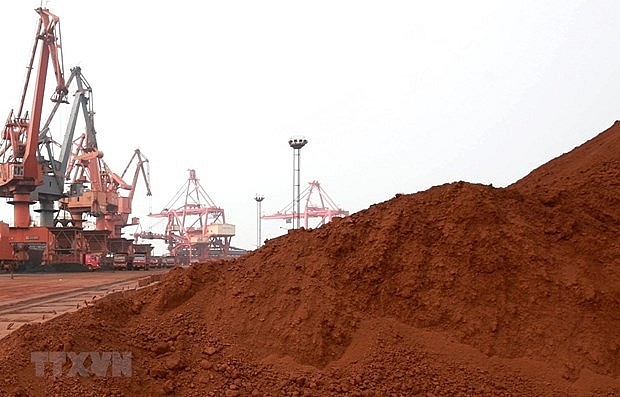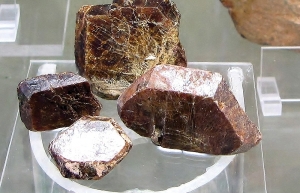Rare earth upsides can help beckon foreign capital
 |
| Rare earth upsides can help beckon foreign capital, Photo: AFP/VNA |
Deputy Prime Minister Tran Hong Ha last week signed Decision No.866/QD-TTg on the master plan for the exploration, extraction, processing, and use of minerals for the next decade and beyond. The plan includes about 2.1 million tonnes of raw rare earth ores to be exploited every year.
By 2030, there will be expansion of mining technologies and markets, deep processing of rare earth minerals that have been licensed at several mines in the northern provinces of Lai Chau, Lao Cai, and Yen Bai, and the launch of a rare earth processing factory in Yen Bai’s Van Yen district.
According to the US Geological Survey in 2022, Vietnam’s rare earth reserves account for 18 per cent of the world’s total rare earth reserves, at about 22 million tonnes, just behind China (44 million tonnes) and followed by Brazil, Russia, Mongolia, and India.
Rare earths are composed of 17 elements, most of which play an irreplaceable role in the production of high-tech equipment, chemical technology, semiconductors, electric vehicle batteries, wind turbines, telephones, and aircraft.
Based on this, Vietnam is calling for investment in semiconductors. Only the United States, the Netherlands, Japan, and South Korea currently possess top semiconductor technologies, and economist Ha Ton Vinh believes that rare earths are needed for semiconductor manufacturing more than ever.
“Although China has strengths in reserves and rare earth mining, this country is losing its advantage because developed countries in the semiconductor industry do not transfer mining technology to this country,” Vinh said.
“China’s rare earth mining technologies are getting old, while Vietnam is emerging with several advantages, and numerous foreign investors are working to exploit rare earths and develop semiconductor manufacturing factories.”
Khuong Quang Dong, an expert in the automotive industry in France, said that Vietnam should accelerate investment in processing rare earths into strategic materials to supply domestic high-tech industries such as electronics, petrochemical, and especially the semiconductor production.
“We have been exporting raw materials for too long, and now the plan sets out the tasks for mineral processing clearly. We should determine the target and follow the plan even faster because this is the time to sell processing materials. The better the industry develops, the more surplus value will be generated,” Dong said.
A month ago, South Korea and Vietnam signed an MoU to set up a supply chain centre for rare earths and other important minerals to ensure a stable supply for South Korean companies, and called on them to invest in Vietnam in manufacturing semiconductors and other high technologies. Reimbursement is estimated at $4 billion by 2030 as a part of official development assistance.
Thanks to these upsides, Vietnam is expected to be a new destination for semiconductor manufacturing and other high technologies. The Vietnam-Korea Techno Park Complex inside the South Hanoi Supporting Industrial Park, for example, will focus on microchip manufacturing projects, based on an agreement between Vietnam’s N&G Group and South Korea’s SEIN I&D Group made in June.
Also in June, Infineon Technologies AG announced the expansion of operations, establishing a team to develop electronic chips working in Hanoi. This strategy aims to meet the growing demand for functional testing and custom circuit design for Infineon’s system-on-chip solutions. Infineon’s goal is to turn the centre in Hanoi into a research and development centre of international standards.
In addition, American semiconductor corporation Synopsys is also expanding its operations in Vietnam by transferring investment and training engineers in the country, while USI Electronics of Taiwan and Renesas Electronics of Japan also have factories in Vietnam.
Meanwhile, the $2.6-billion Samsung Electro-Mechanics facility in the northern province of Thai Nguyen is manufacturing semiconductors expected to be released at the end of this year, after a rigorous testing process. South Korea’s Amkor Technology is also hurrying to build a $1.6-billion semiconductor complex in the northern province of Bac Ninh, which is expected to start manufacturing within the next couple of months.
The scale of the global chip market in 2022 was about $600 billion and is expected to rise to $1.4 trillion by 2029, and Vietnam ranks ninth globally in exporting electronic goods.
 | Rare earth prices surge as China tightens grip Prices of rare earths have skyrocketed this year as China moves to consolidate the sector in order to tighten its grip over the highly coveted minerals used in high-tech products, analysts said on Monday. |
 | Japan, US, and EU to meet on rare earths Japan said on Wednesday it will host the European Union and United States at a meeting on developing alternatives for rare earths as Chinese controls on the key minerals raise fears of a supply squeeze. |
 | China says rare earths practices meet WTO rules China said Wednesday its regulation of the rare earths industry was in line with international rules as it faces international pressure over its control of the crucial elements. |
 | Rare earths become trade dispute tools The importance of rare earths, required for everything from iPhones to fighter jets, has been brought back to the fore in recent weeks with China and the United States moving to protect their interests as their trade dispute rumbles on. |
What the stars mean:
★ Poor ★ ★ Promising ★★★ Good ★★★★ Very good ★★★★★ Exceptional
Related Contents
Latest News
More News
- Global partnerships key to Vietnam’s IFC development (December 26, 2025 | 16:18)
- Vingroup pulls out of bid to invest in North-South high-speed railway (December 26, 2025 | 11:42)
- Strengthening supply chains through trade promotions and customs reform (December 24, 2025 | 14:00)
- PM orders investment model for North–South high-speed rail (December 22, 2025 | 17:43)
- LS Eco Energy to invest in Vietnam rare earth sector (December 22, 2025 | 17:31)
- Government moves to establish International Financial Centre (December 21, 2025 | 21:00)
- Vietnam's IFC to target global investment flows (December 21, 2025 | 18:00)
- Two national hospitals expand capacity with new facilities (December 20, 2025 | 09:00)
- Ha Tinh breaks ground on major Vingroup industrial and energy projects (December 19, 2025 | 18:24)
- EVN launches major power infrastructure projects nationwide (December 19, 2025 | 18:17)

 Tag:
Tag:





















 Mobile Version
Mobile Version